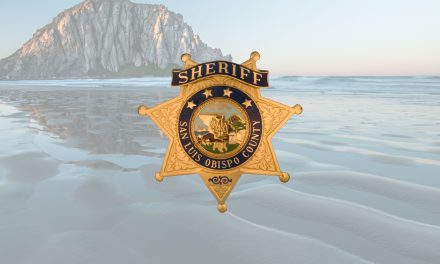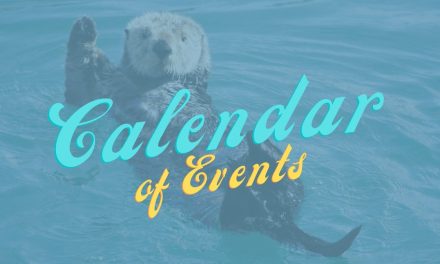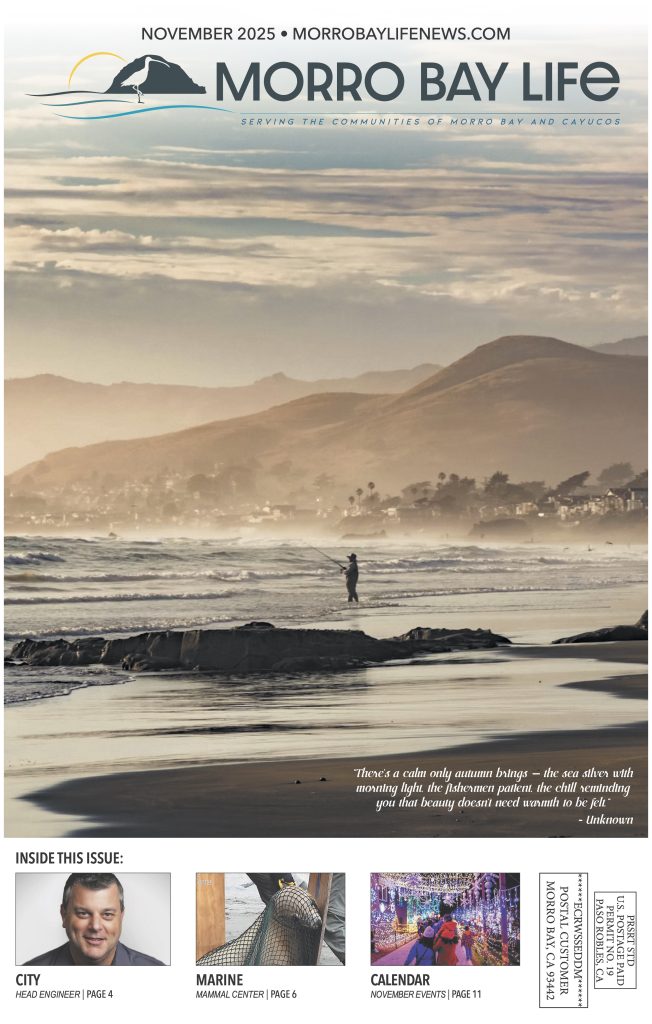Atlas Wind sought a ‘de minimis waiver’ from the normal Coastal Development Permit process
One of three offshore wind energy companies pulled a permit waiver application from consideration by the Coastal Commission and will instead apply for a full permit and review.
Atlas Wind, which is the LLC for the wind farm proposal by parent company, Equinor, had sought a “de minimis waiver” from the normal Coastal Development Permit process under the California Coastal Act.
With the staff in favor of the waiver and the commission slated to hear the matte at its May meetings, but with local opponents planning to oppose it, the company pulled it from consideration at the last minute.
“We look forward to immediately submitting our application for a Coastal Development Permit [CDP] and providing the CCC a further opportunity to review our plans under the CDP process,” Atlas Wind Fisheries Liaison Officer Elizabeth Ann Marchetti said.
The waiver was for the company’s underwater testing needed to survey the seafloor along the 60-mile route the project’s transmission cables would take to bring the power ashore from the so-called “Morro Bay Call Area,” a nearly 400-square mile patch of open ocean located 20-30 miles off the Coast of San Simeon.
That’s where the Federal Bureau of Ocean Energy Management (BOEM) last year sold three 80,000-acre lease sites to three different companies to try and establish some 3 gigawatts of capacity using floating wind turbines.
The water in the call area is from 3,200-feet to 4,500-feet deep, according to Atlas Wind.
Atlas Wind has been given the go-ahead to conduct underwater testing at the call area, in federal waters out past 3 miles, and the Coastal Commission’s waiver would have covered that same scientific work in State waters — from the beach to 3 miles out.
The pulling of the waiver apparently isn’t affecting the outside work, which was given a final clearance in mid-April.
“Survey activities outside of state waters will continue as planned and authorized, upon full authorization by the CCC, the survey campaign in state waters will begin,” Marchetti said in a notice to mariners.
The CCC staff was all set to grant the waiver.
“Based on the project plans and information provided in your permit application for the development described below,” reads an April 26 letter from the commission included in the May 10 agenda report. “The Executive Director of the Coastal Commission hereby waives the requirement for a Coastal Development Permit.”
The Commission’s report said Atlas Wind (Equinor) “proposes to conduct geophysical, geotechnical sampling, and benthic [seabed] habitat surveys in state waters off of San Luis Obispo County from the coast to the three-mile state water boundary.
The proposed geophysical surveys would identify seafloor features [e.g., substrate and sediment type, archeological and cultural resources, rocky reef and consolidated hard bottom habitat] using high resolution, low energy imaging/sensing equipment including multibeam sonar, sidescan sonar, and a subbottom profiler. None of this geophysical survey equipment would contact the seabed.”
Though it would seem the companies should by now have a good idea of what their projects will look like — where they would locate floating substations, and routes the transmission cables would take to bring the power ashore, there’s a lot left to decide.
“The mapping data from the geophysical survey would be used to identify preliminary submarine export cable routing options, locations of hard bottom habitat [rocky reefs] and other sensitive resources, and locations for geotechnical and benthic samples.”
Benthic refers to the myriad of sea creatures that burrow into the mud at the bottom, and include crustaceans, fish andmollusks, among other critters.
“Geotechnical and benthic sampling,” the report said, “would confirm the data interpretation of the geophysical survey mapping, provide information about sediment variability and stratigraphy, and provide samples for geoarchaeological analyses.”
Plainly put, the tests will survey the sea floor by sending down sound waves and map the contours with essentially echoes. The idea is to find rocky areas and reefs which are the good fish habitat areas. Rocks and reefs would also be hard to trench through for transmission cables.
The company apparently plans to take samples from the sea floor. “Atlas Wind,” the report said, “anticipates conducting a total of 26 vibracore or piston core samples; 12 cone penetration tests; two sediment grab samples; and six sediment plan view and profile images during their geotechnical and benthic sampling surveys.”
The vibracore machine collects core samples, 6 meters deep and 4 inches in diameter.
According to the CCC report, the piston core machine “would collect 3.3-inch diameter, 20-meter vertical sediment cores; the cone penetration test would involve extension of a 6-meter long rod through the sediment without collecting any sediment; the sediment grab would collect the top 2 to 4 inches of sediment from a 1 square foot area.”
All told the seafloor testing would remove some 5.5 cubic yards of sediment “during the combined geotechnical and benthic sampling surveys.”
Only 1,865 square feet of the seabed would be impacted, which is negligible when the potential cable route is over 60 miles long and up to 4 miles wide.
The report seems to indicate that Atlas Wind isn’t yet sure about their project, saying, “The purpose of these surveys is to gather data and information along potential submarine export electric cable corridors between Atlas Wind’s offshore wind lease area and potential cable landfall locations in Morro Bay and the vicinity of Diablo Canyon Nuclear Power Plant, beyond Point Buchon.”
The ultimate route will have to tap dance around some protected areas, including the Point Buchon State Marine Reserve, which covers the area from just north of Morro Rock down past Point Buchon, pointing offshore at Diablo Canyon.
According to the California State Parks website, “An MPA is a type of managed area primarily set aside to protect or conserve marine life and habitats in marine or estuarine waters. California’s MPA Network consists of 124 areas with varying levels of protection, and 14 special closures, all designed to help safeguard the state’s marine ecosystems.
“Fishing and collecting are banned at marine reserves such as Point Buchon State Marine Reserve, providing this MPA with the highest level of protection. One goal for California’s MPAs was to strategically place them near each other to form an interconnected network that would help to preserve the flow of life between marine ecosystems.”
No fishing is allowed and “All take of living marine resources is prohibited,” according to the website.
When it finally does get the CCC’s permit for its tests, Atlas Wind plans to do the work in an approximately 4-mile-wide swath starting north of Morro Rock and extending northward. The call area is about 60 miles from Morro Bay.
The company plans a 1-mile swath northward of the northern boundary of the Point Buchon State Marine Reserve, and a mile-wide swath “that bends around the southern boundary of the Point Buchon State Marine Reserve.”
Atlas Wind has no plans to conduct the surveys within the State Marine Reserve or Marine Conservation Area. Each portion of the tests would only take a maximum of 48 days to complete and were being planned to happen from June 2024 to July 2025, according to the CCC report. That schedule now appears shot.
The commission had already determined that such surveys in federal waters were consistent with the Coastal Act andsince they planned to use the same testing equipment for the state waters, the CCC Director would have OK’d it too.
The various pieces of equipment being proposed for the surveys have been checked out before.
“All the geophysical equipment proposed for use in this project are classified as having de minimis impacts on marine animals in a recent U.S. Geological Survey review and classification of active marine acoustic sources and their impacts,” the Commission Director’s report said.
The report also claims that the sound levels used for these surveys don’t harm the sea life.
“Although they may generate elevated sound levels [i.e., high decibel], the sound frequencies produced by the multibeam sonar and sidescan sonar [greater than 200 kHz] are beyond the hearing range of marine mammals, sea turtles, and fish and are therefore not expected to result in injury or behavioral changes in these organisms,” it said, going on to say the sub-bottom profiler “produces sound with frequencies [2-16 kHz in the hearing range of marine mammals, but outside the hearing range of sea turtles and the majority of fish species.”
The company plans to use “autonomous underwater vehicles” or AUVs with the surveys, sending them down nearly to the bottom to run their sound tests.
“AUV survey activities, can be conducted 40 meters or less above the seafloor, as compared to near the sea surface when operating shipboard or towed equipment,” the report said.
Sending the AUVs down cuts the water column considerably and should also help protect any sea creatures near the surface.
In any event, the plan is to keep a watch out for marine mammals — in particular whales — passing nearby.
“Extra precautions would be employed to prevent exposure of marine mammals to potentially disturbing audible frequencies and the equipment will be turned off immediately if any Endangered Species Act-listed whales come within 500 meters of the sound source. Additionally, shutdown would occur if a non-ESA-listed marine mammal species or a sea turtle is observed within 100 meters of the sound source,” the report said.
In any event, the State Lands Commission, which owns all underwater areas in the state, is OK with it.
“All the proposed geophysical survey equipment is low-energy and high resolution and is authorized under the California State Lands Commission’ Offshore Geophysical Survey Permit Program’ [OGPP],” the report said. “OGPP-approved survey equipment and methods have undergone extensive research and vetting for environmental impacts in coastal waters.”
The company will also have to monitor the waters around the big survey vessel (250-360 feet long), which is expected to be used for the majority of the testing. A smaller, nearshore boat (30 feet long) would conduct much of the surveying of state waters.
That big boat will be using the port of San Francisco to resupply and exchange crews, according to the Commission Director’s report. But the smaller one could come into the Morro Bay Harbor, and would use existing port facilities, like the T-piers.
The big vessel will also have to keep a watch out for fishermen.
“The survey vessel will take reasonable measures to avoid interfering with fishing,” the Commission Director’s report said. “If it is feasible to move to a different part of the survey area the vessel will do so as a preferred avoidance measure.”







